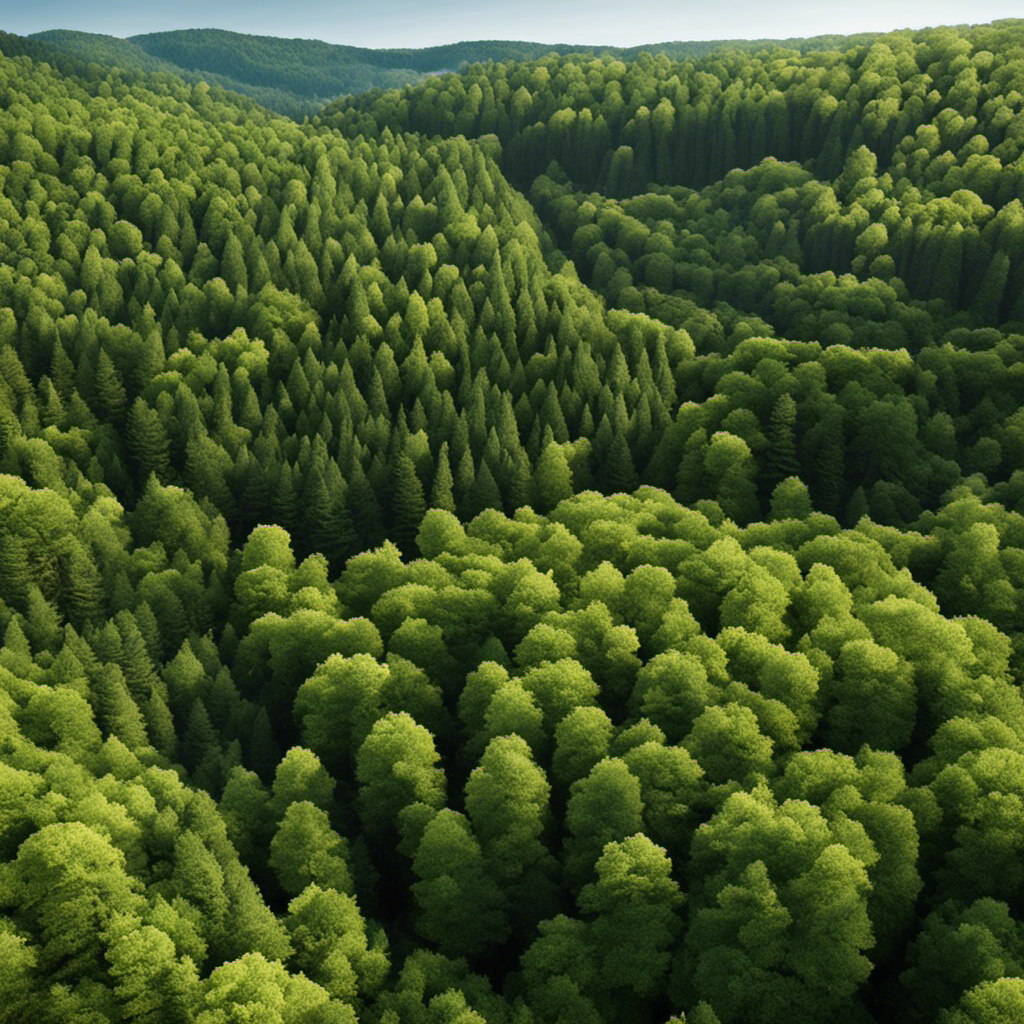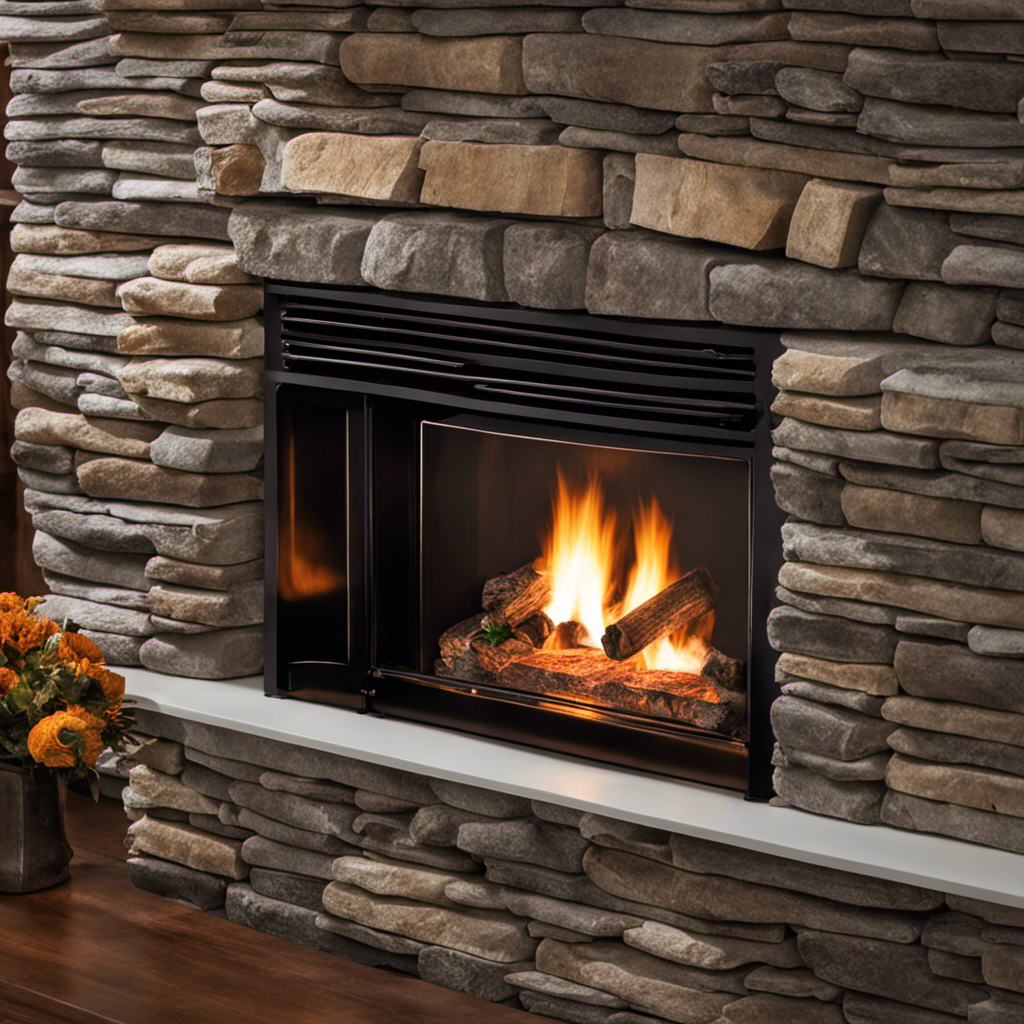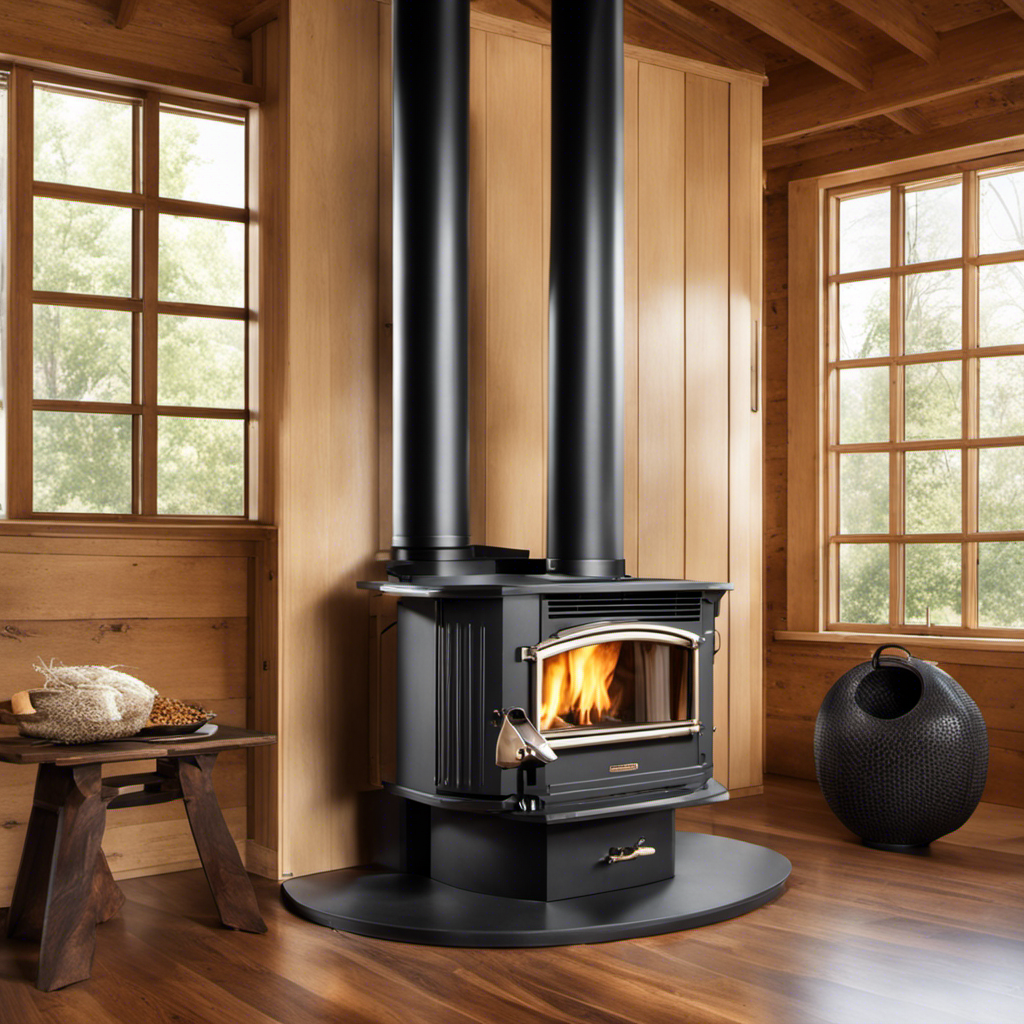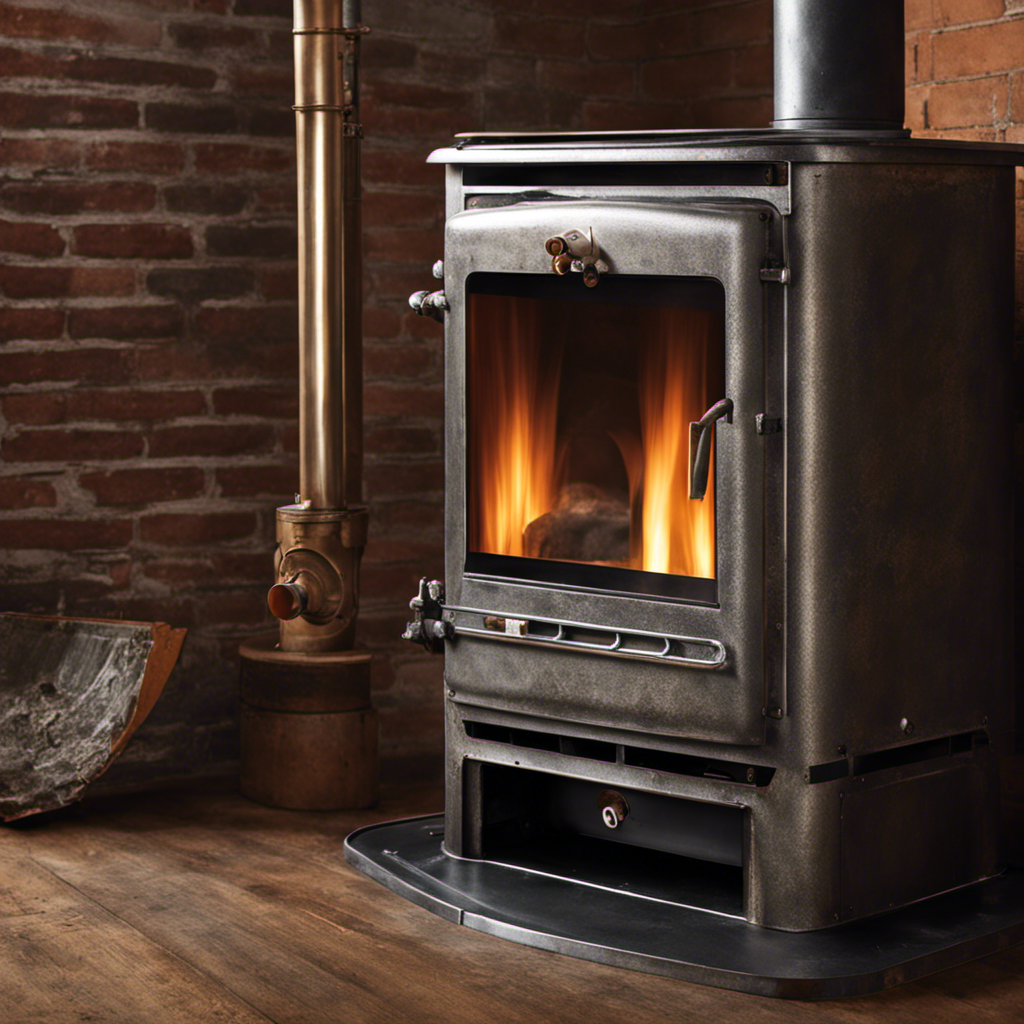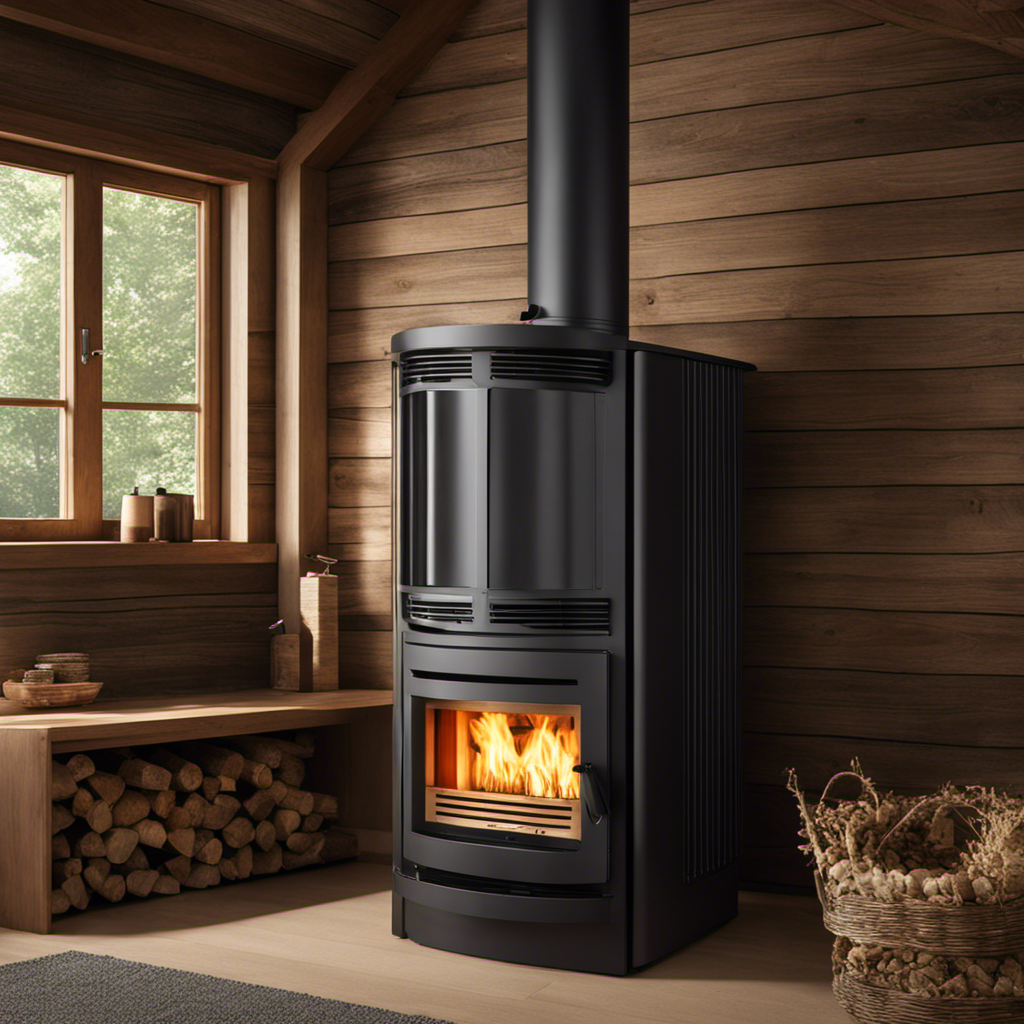Exploring the environmental impact of wood pellets uncovers a complex array of results. On one hand, wood pellets offer an effective alternative to fossil fuels, reducing greenhouse gas emissions and promoting the development of renewable energy sources.
Yet, the production and use of wood pellets also raise concerns about deforestation, air and water pollution, and habitat loss.
In this article, we will delve into the intricate relationship between wood pellets and the environment, examining both the potential benefits and the challenges they pose.
Key Takeaways
- Wood pellet production can lead to deforestation and habitat loss, causing the loss of plant and animal species and disrupting ecosystems.
- Burning wood pellets can increase greenhouse gas emissions, contributing to climate change, despite being considered renewable.
- The combustion of wood pellets releases pollutants that affect air quality, including particulate matter, volatile organic compounds, and nitrogen oxides, which can have negative health effects.
- Wood pellet production can lead to water contamination and decreased water quality, as well as strain water resources due to the large amounts of water required in the manufacturing process.
Environmental Impact of Wood Pellet Production
The environmental impact of wood pellet production is a major concern. Wood pellets are commonly used as a source of renewable energy due to their low carbon emissions and efficiency. However, their production can have negative effects on biodiversity.
One of the main issues is the sourcing of wood for pellet production, which often leads to deforestation and habitat loss. Forests are essential for maintaining biodiversity as they provide habitat for countless species. When forests are cleared for wood pellet production, it disrupts ecosystems and can result in the loss of plant and animal species.
This loss of biodiversity has far-reaching consequences for the overall health and resilience of ecosystems. It is crucial to address these concerns and find sustainable ways to produce wood pellets without causing harm to biodiversity and ecosystems.
Deforestation and Habitat Loss
Deforestation and habitat loss are major concerns when it comes to using wood pellets. The consequences of deforestation are far-reaching, as it leads to the destruction of wildlife habitats and disrupts entire ecosystems. As trees are cut down to produce wood pellets, wildlife species lose their homes and struggle to find food and shelter. This has a detrimental impact on biodiversity and can lead to the extinction of vulnerable species. To understand the severity of this issue, let’s take a look at the table below:
| Deforestation Consequences | Wildlife Habitat Destruction |
|---|---|
| Loss of carbon sinks | Displacement of species |
| Soil erosion | Fragmentation of habitats |
| Increased greenhouse gas emissions | Loss of biodiversity |
| Impacts on local communities | Disruption of ecosystems |
| Climate change | Ecological imbalance |
The destruction caused by deforestation and habitat loss is alarming and calls for immediate action. However, it is not the only environmental concern associated with wood pellets. Another significant issue is the greenhouse gas emissions from wood pellet combustion.
Greenhouse Gas Emissions From Wood Pellet Combustion
Burning wood pellets can contribute to increased greenhouse gas emissions. Wood is considered a renewable resource, but the process of harvesting, processing, and transporting wood pellets can release significant amounts of carbon dioxide into the atmosphere.
Wood pellets are often touted as a carbon neutral energy source, but this claim is not entirely accurate. Although trees absorb carbon dioxide as they grow, the emissions released during the production and combustion of wood pellets can outweigh the carbon sequestration benefits.
To truly achieve greenhouse gas reduction, it is crucial to consider sustainable forestry practices and efficient combustion technologies. Transitioning to cleaner and more sustainable energy sources, such as wind or solar power, can further minimize the environmental impact of energy production.
Now, let’s explore the impacts of wood pellet combustion on air pollution and health effects.
Air Pollution and Health Effects
To understand the impact on your health, it’s important to consider how air pollution can be influenced by the combustion of wood pellets. Wood pellet combustion releases various pollutants into the air, which can have detrimental effects on air quality and respiratory health.
Here are three key ways in which air pollution from wood pellet combustion can affect you:
- Increased levels of particulate matter can lead to respiratory problems such as coughing, wheezing, and shortness of breath.
- Emissions of volatile organic compounds (VOCs) can contribute to the formation of ground-level ozone, which can irritate the lungs and worsen existing respiratory conditions.
- The release of nitrogen oxides (NOx) can react with other pollutants in the atmosphere to form fine particles that can penetrate deep into the respiratory system.
Understanding the impact of air pollution from wood pellets on air quality and respiratory health is crucial for making informed decisions about their use. This knowledge also highlights the need to explore alternative, cleaner energy sources to mitigate these adverse effects.
Moving forward, it is important to consider the potential water pollution and ecological consequences that can arise from wood pellet use.
Water Pollution and Ecological Consequences
While wood pellet combustion can have detrimental effects on air quality and respiratory health, it is important to also consider the potential water pollution and ecological consequences that can arise from their use.
Wood pellets are often produced using chemicals and additives that can leach into water sources, leading to contamination and decreased water quality. This can harm aquatic organisms and disrupt the delicate balance of ecosystems.
Additionally, the manufacturing process of wood pellets requires large amounts of water, further straining local water resources. Runoff from wood pellet storage and transportation facilities can also introduce pollutants into nearby water bodies, causing further ecological damage.
Therefore, it is crucial to assess the impact of wood pellet use on water quality and take steps to minimize ecosystem disruption. Moving forward, it is necessary to examine the carbon footprint of wood pellet manufacturing and its implications for climate change.
Carbon Footprint of Wood Pellet Manufacturing
When considering the carbon footprint of wood pellet manufacturing, three key points come to mind: the impact of manufacturing emissions, the use of renewable energy sources, and the practice of sustainable forest management.
First, it is important to examine the emissions generated during the manufacturing process, as these can contribute to overall environmental impact.
Secondly, wood pellets are often touted as a renewable energy source due to their use of biomass, but it is crucial to assess the sustainability of the biomass used.
Lastly, sustainable forest management plays a vital role in ensuring that the resources used for wood pellet production are responsibly harvested and replenished.
Manufacturing Emissions Impact?
You should consider the impact of manufacturing emissions when evaluating the environmental effects of wood pellet production. Manufacturing efficiency and waste management play a significant role in determining the overall emissions from the production process. Efficient manufacturing techniques can reduce energy consumption and minimize greenhouse gas emissions.
Additionally, effective waste management practices can prevent the release of harmful pollutants into the environment. By optimizing manufacturing efficiency and implementing proper waste management strategies, wood pellet producers can minimize their carbon footprint and reduce the environmental impact of their operations.
However, it is important to assess the entire life cycle of wood pellet production to fully understand its environmental implications. Is wood pellet truly a renewable energy source? Let’s delve further into this question.
Renewable Energy Source?
Optimizing manufacturing efficiency and waste management strategies can help minimize the environmental impact of wood pellet production and determine if it is truly a renewable energy source.
Here are four important points to consider when evaluating the renewable energy benefits of wood pellets:
-
Carbon Neutrality Debate: Wood pellets are often touted as carbon-neutral due to their ability to absorb and store carbon dioxide during tree growth. However, critics argue that the emissions released during manufacturing and transportation can outweigh this benefit.
-
Energy Efficiency: Improving the energy efficiency of wood pellet production processes can reduce overall carbon emissions. Advancements in technology and equipment can help optimize energy usage and minimize waste.
-
Waste Management: Proper waste management is crucial to minimize the environmental impact of wood pellet production. Effective waste management systems can ensure that by-products like bark and sawdust are utilized efficiently or disposed of responsibly.
-
Life Cycle Assessment: Conducting a comprehensive life cycle assessment can provide valuable insights into the environmental impact of wood pellet production. This analysis considers all stages, from forest management to pellet production and combustion.
Understanding these factors is essential in determining the true sustainability and environmental benefits of wood pellets as a renewable energy source.
Now, let’s delve into the next section about sustainable forest management.
Sustainable Forest Management?
Improving sustainable forest management practices can have a positive impact on the overall environmental footprint of wood pellet production. By ensuring that forests are managed in a way that promotes ecological balance and biodiversity, we can maintain the long-term health and productivity of these ecosystems. Sustainable forest management involves practices such as selective harvesting, reforestation, and protection of sensitive habitats. These efforts help to minimize the negative impacts of wood pellet production on the environment, such as deforestation and habitat destruction.
To better understand the benefits of sustainable forest management, let’s take a look at the table below:
| Sustainable Forest Management Practices | Environmental Benefits |
|---|---|
| Selective harvesting | Preserves forest health |
| Reforestation | Ensures long-term sustainability |
| Habitat protection | Preserves biodiversity |
By implementing these practices, we can mitigate the environmental impacts of wood pellet production and ensure that this renewable energy source remains truly sustainable.
Moving forward, let’s explore the importance of sustainable sourcing of wood for pellet production.
Sustainable Sourcing of Wood for Pellet Production
When considering the sustainable sourcing of wood for pellet production, two key points that are important to discuss are the impact of deforestation and the potential for carbon emissions reduction.
Deforestation is a significant concern as it leads to the loss of valuable ecosystems and contributes to climate change.
On the other hand, using wood pellets as a renewable energy source has the potential to reduce carbon emissions when compared to fossil fuels, making it an attractive option for mitigating climate change.
Deforestation Impact
The use of wood pellets has a significant impact on deforestation. When forests are cleared for the production of wood pellets, it leads to various consequences, including biodiversity loss. Deforestation destroys the habitats of countless species, disrupting the delicate balance of ecosystems. This loss of biodiversity can have far-reaching effects on the environment, as different species play crucial roles in pollination, seed dispersal, and nutrient cycling.
Furthermore, deforestation contributes to climate change, as trees absorb carbon dioxide and help regulate the Earth’s temperature. Without these carbon sinks, the concentration of greenhouse gases in the atmosphere increases, exacerbating global warming. Transitioning to wood pellets as a source of energy should be accompanied by measures to mitigate deforestation and protect biodiversity.
Additionally, it is crucial to address another significant environmental concern: reducing carbon emissions.
Carbon Emissions Reduction
To reduce carbon emissions, you should consider implementing sustainable energy practices. One way to do this is through carbon offsetting, which involves investing in projects that reduce greenhouse gas emissions to compensate for your own carbon footprint.
Another effective method is carbon sequestration, which involves capturing and storing carbon dioxide from the atmosphere. By implementing these practices, we can significantly reduce the amount of carbon emissions released into the environment.
This is particularly important when it comes to wood pellet use, as the production and burning of wood pellets can release large amounts of carbon dioxide. However, there are ways to mitigate the environmental impacts of wood pellet use, such as using sustainable forestry practices and ensuring proper management of forests.
These measures can help minimize deforestation and protect the biodiversity of ecosystems.
Mitigating the Environmental Impacts of Wood Pellet Use
Mitigating the environmental impacts of wood pellet use involves implementing sustainable harvesting practices and investing in renewable energy sources. It is important to address the negative consequences of wood pellet production and consumption to ensure a sustainable future.
Here are three key actions that can help mitigate the environmental impacts of wood pellet use:
-
Sustainable forestry management: Adopting sustainable harvesting practices ensures the ecological balance of forests by promoting regeneration and protecting biodiversity.
-
Transition to renewable energy: Investing in renewable energy sources, such as solar or wind power, reduces the reliance on wood pellets as a primary energy source, thereby mitigating climate change.
-
Improved production efficiency: Implementing energy-efficient technologies and processes in wood pellet production can minimize waste and reduce greenhouse gas emissions.
Do Wood Pellets Have a Negative Impact on the Environment?
Wood pellet heat has gained popularity as a more sustainable alternative to traditional fuels. However, some concerns exist about its potential impact on the environment. When not produced sustainably, wood pellet heat can contribute to deforestation and air pollution, leading to a negative impact on the environment.
Does Using Wood Pellet Heat Have a Negative Impact on the Environment?
Using wood pellet heat cleanliness does not have a negative impact on the environment. Wood pellets are a sustainable and renewable source of energy that produce low emissions. Compared to traditional fossil fuels, wood pellet heat is a cleaner option, making it an eco-friendly choice for heating homes and buildings.
Frequently Asked Questions
Can Wood Pellets Be Used as a Renewable Energy Source?
Yes, wood pellets can be used as a renewable energy source. They are made from compressed wood waste and have a lower carbon footprint compared to fossil fuels. However, their production and transportation also have environmental impacts.
Are Wood Pellets More Environmentally Friendly Than Fossil Fuels?
Wood pellets are a sustainable energy source that produces fewer carbon emissions than fossil fuels. They are an environmentally friendly alternative, contributing to reducing our carbon footprint and protecting the environment for future generations.
What Are the Main Factors Contributing to Deforestation in Wood Pellet Production?
The main drivers of deforestation in wood pellet production are demand for biomass energy and land conversion. These activities have significant environmental impacts, including loss of biodiversity, carbon emissions, and disruption of ecosystems.
How Do Wood Pellets Compare to Other Forms of Biomass Energy?
Wood pellets, in comparison to other forms of biomass energy, can be assessed through a comparative analysis of their environmental impact. This analysis helps determine the potential benefits and drawbacks of using wood pellets as an energy source.
What Are the Potential Long-Term Effects of Increased Wood Pellet Production on Ecosystems and Biodiversity?
In the long run, increased wood pellet production can have significant impacts on wildlife and the composition of forests. It’s important to consider how these changes may affect ecosystems and biodiversity.
Conclusion
In conclusion, it is clear that wood pellets have a significant impact on our environment.
The production and combustion of wood pellets contribute to deforestation, greenhouse gas emissions, air and water pollution, and the overall carbon footprint.
However, by sourcing wood sustainably and implementing mitigation strategies, we can minimize these negative effects.
It’s important for us to recognize the figurative weight that wood pellets carry and make informed decisions to protect our planet.
Together, we can create a greener and more sustainable future.
Growing up surrounded by the vast beauty of nature, Sierra was always drawn to the call of the wild. While others sought the comfort of the familiar, she ventured out, embracing the unpredictable and finding stories in the heartbeat of nature.
At the epicenter of every remarkable venture lies a dynamic team—a fusion of diverse talents, visions, and passions. The essence of Best Small Wood Stoves is crafted and refined by such a trio: Sierra, Logan, and Terra. Their collective expertise has transformed the platform into a leading authority on small wood stoves, radiating warmth and knowledge in equal measure.

